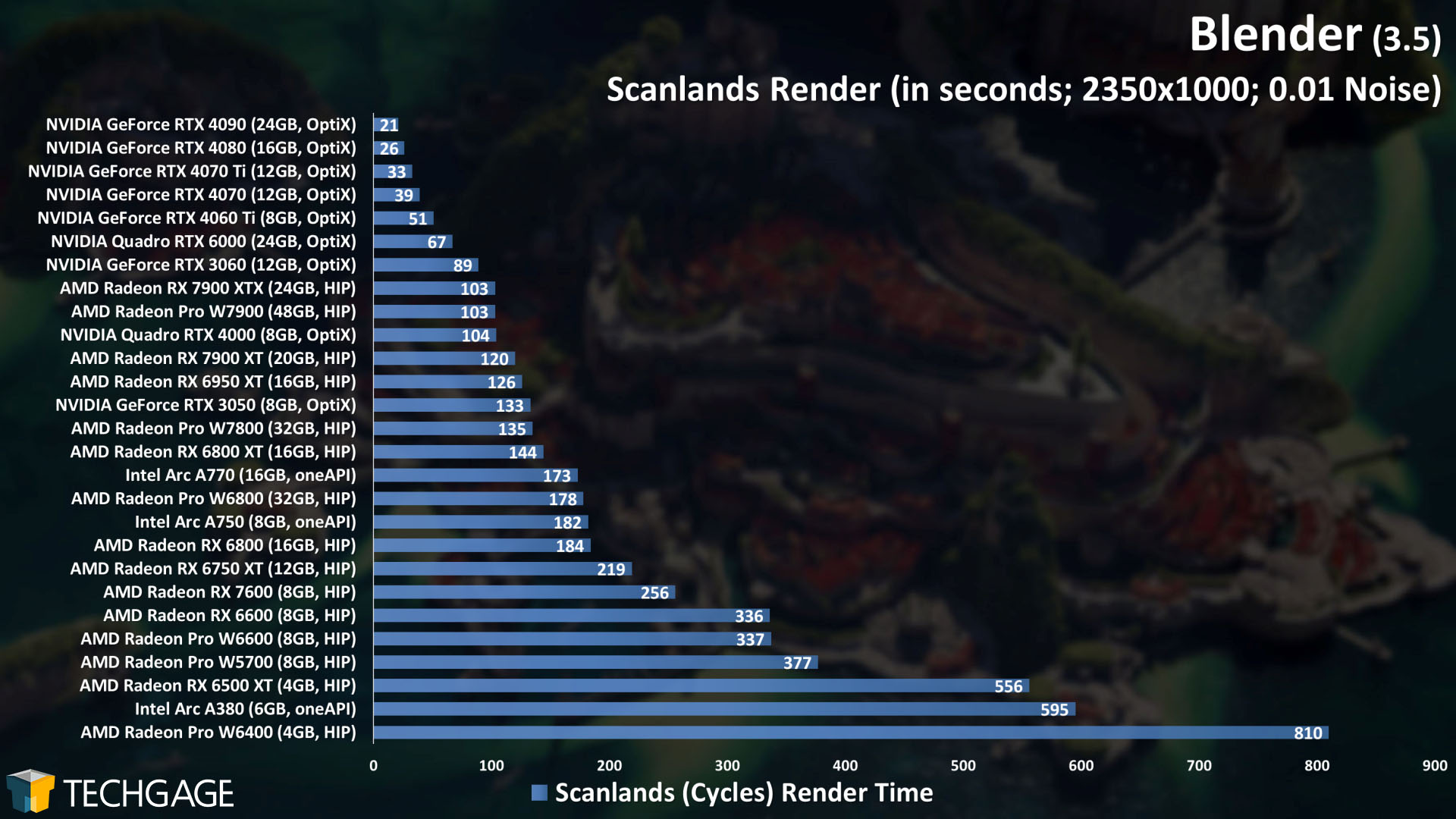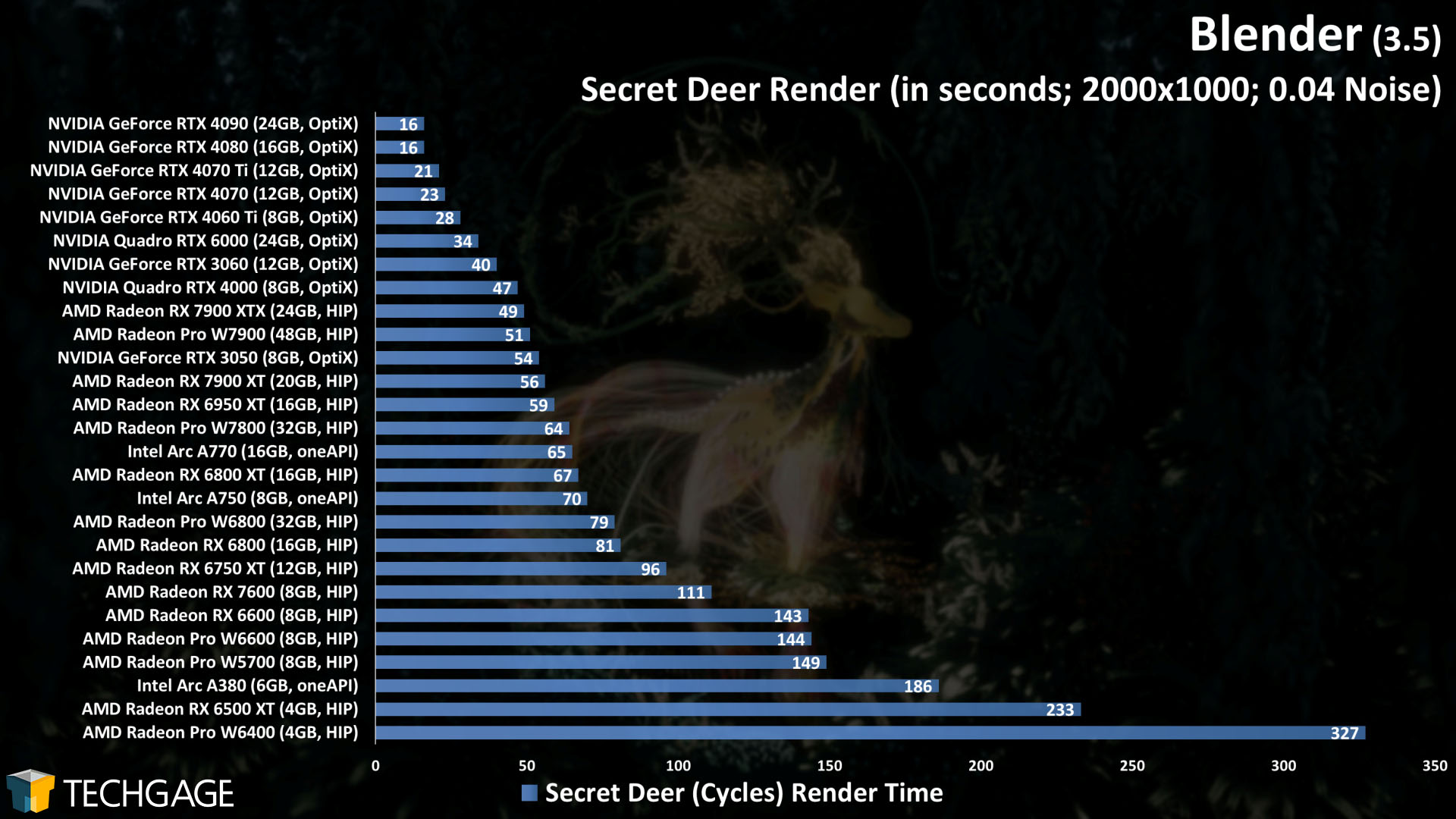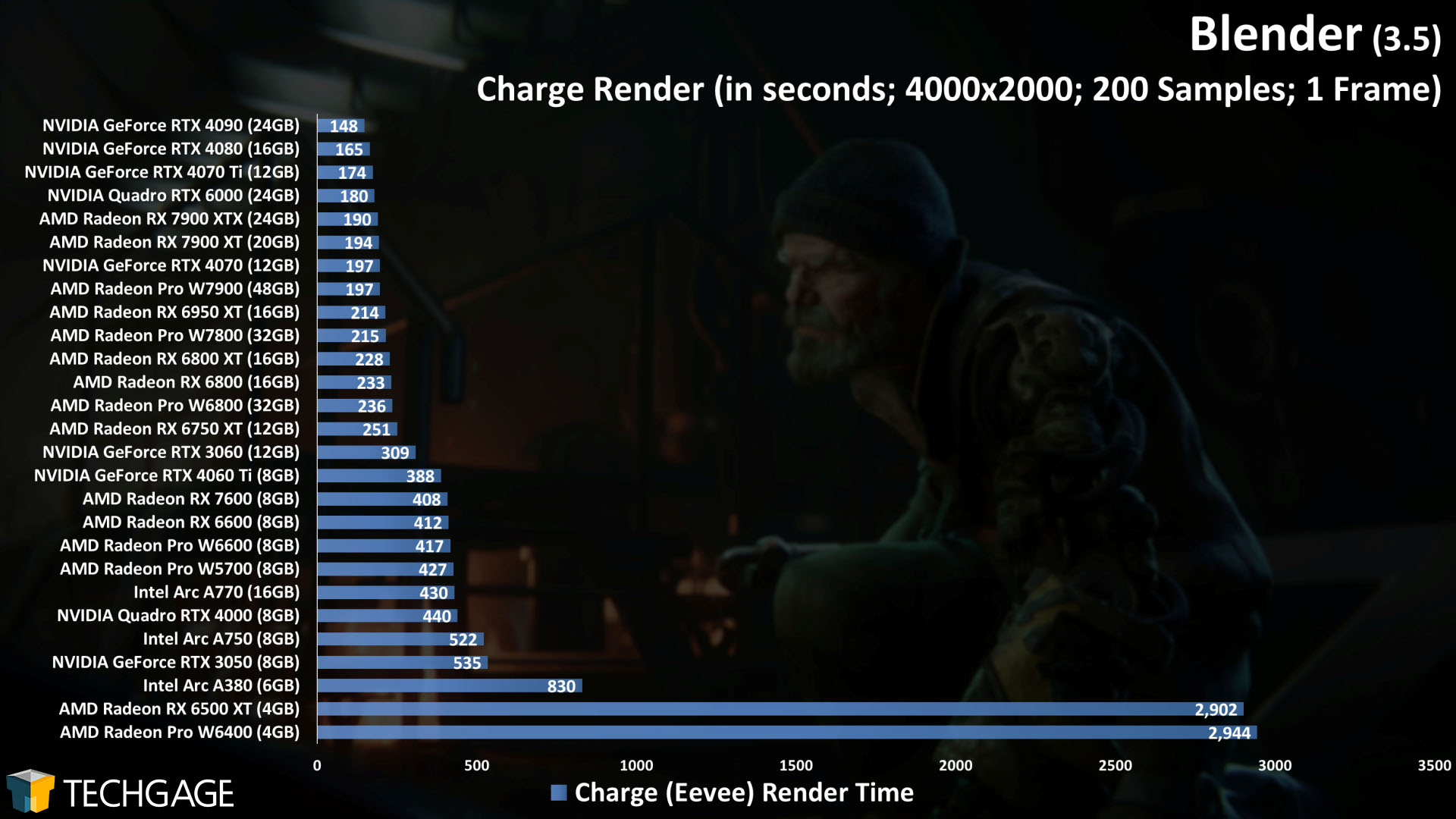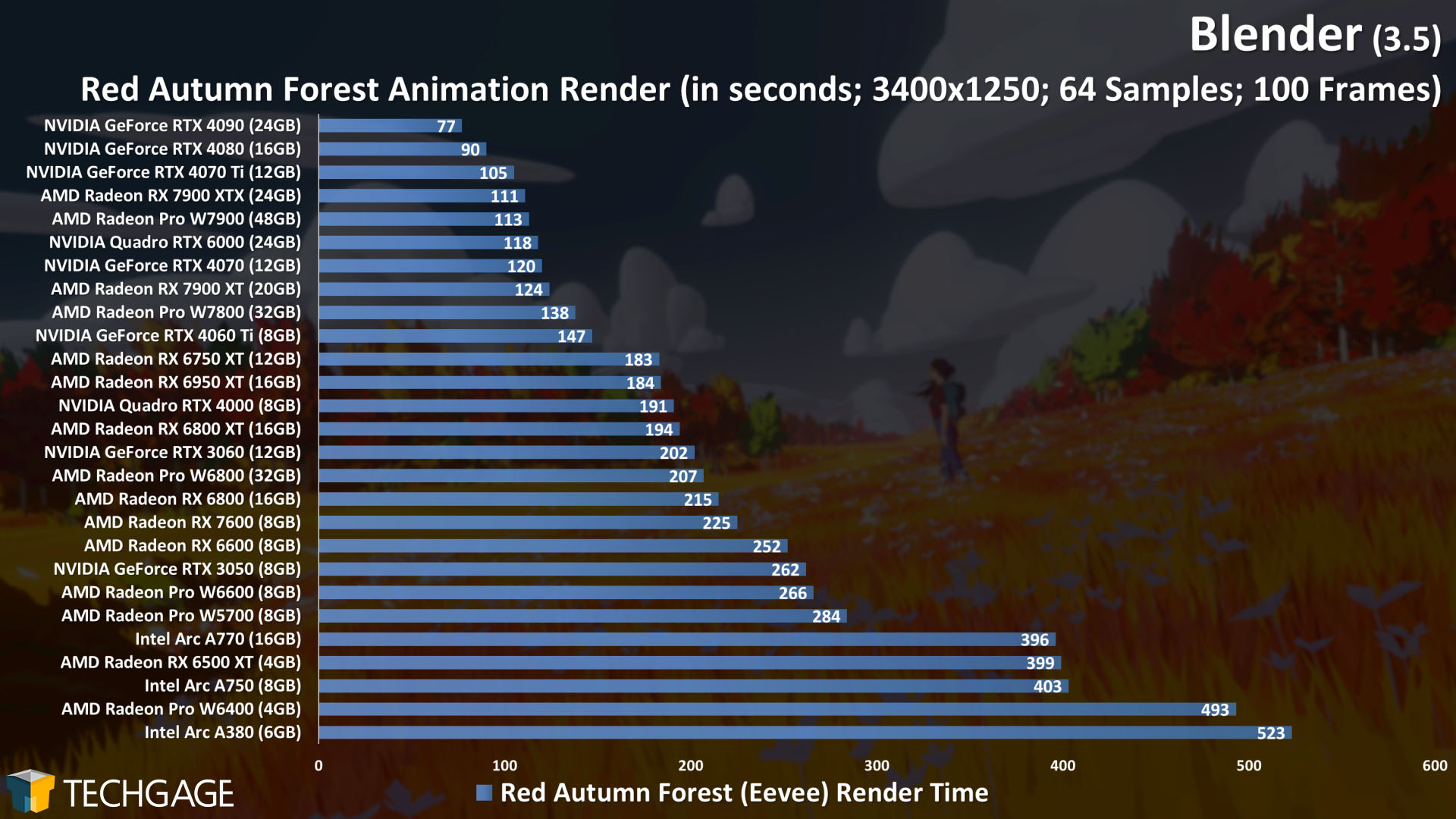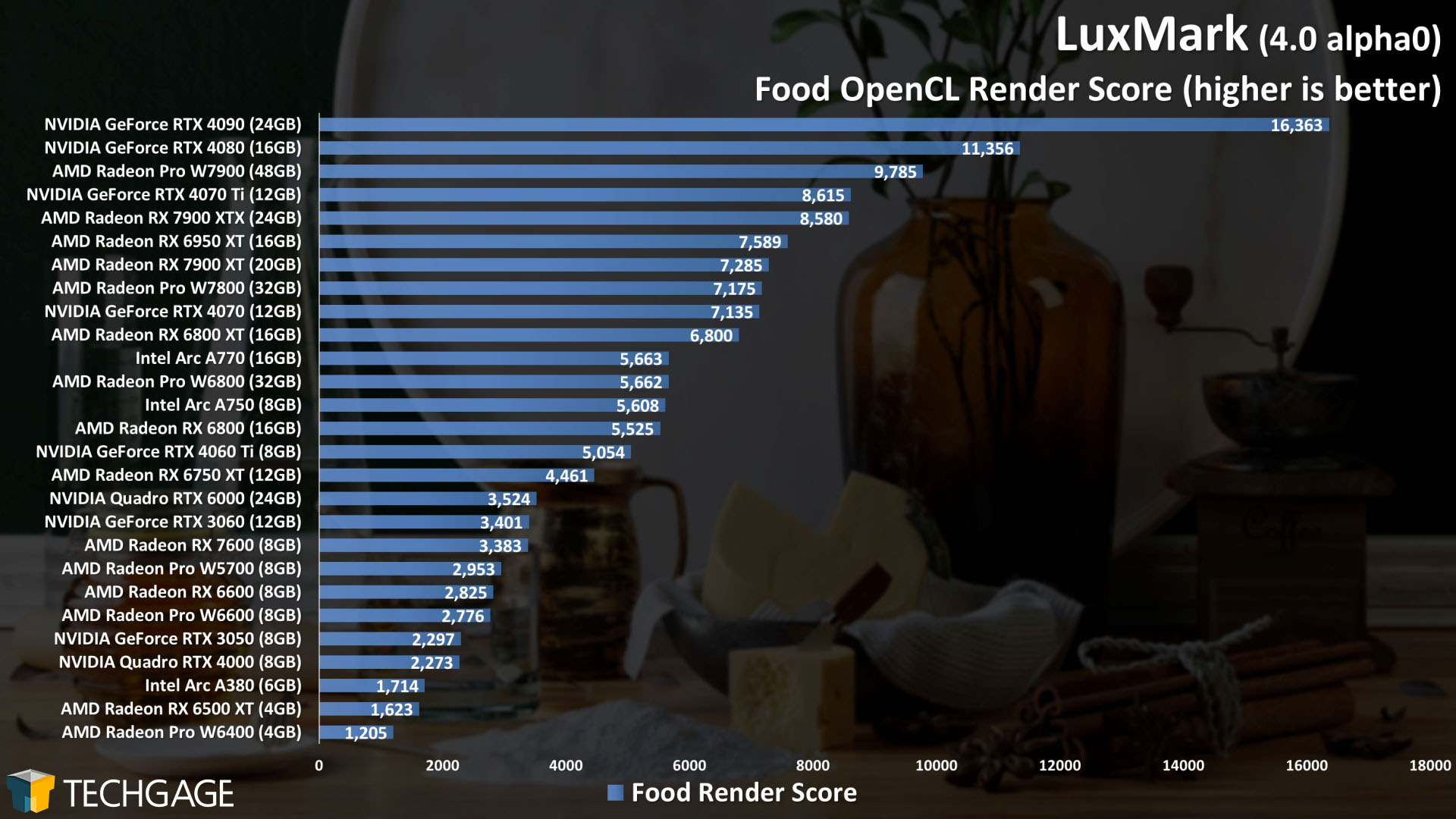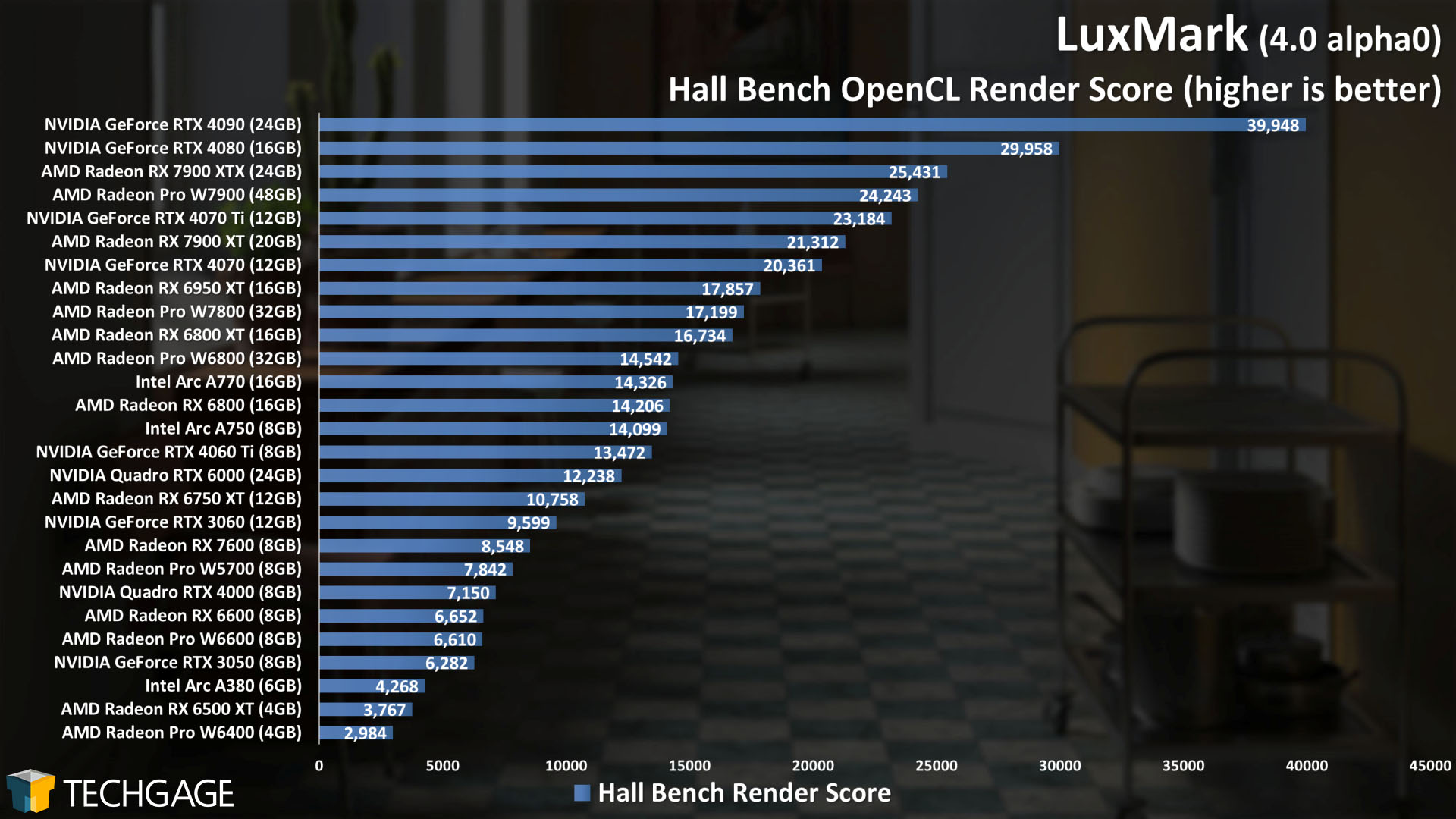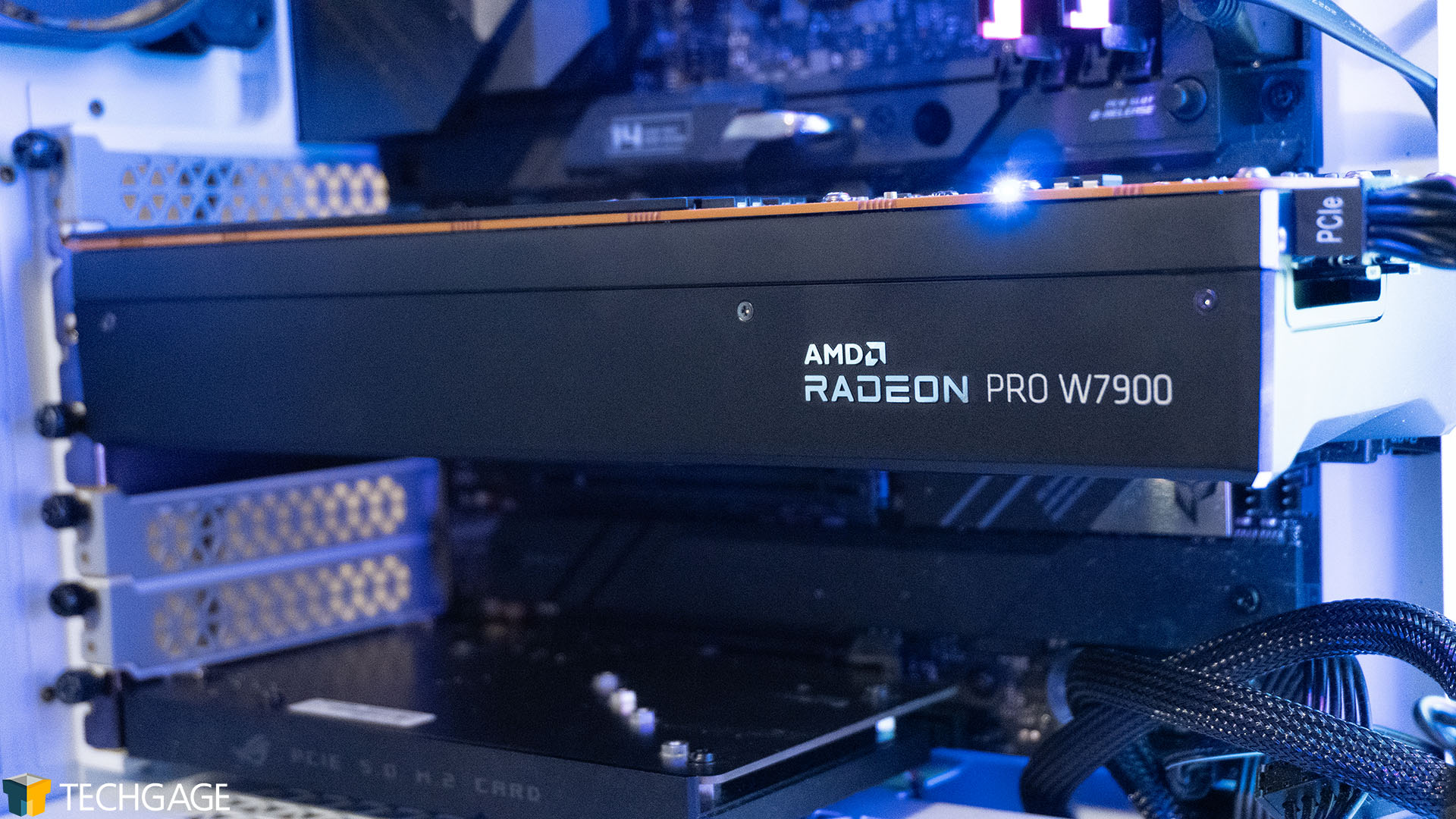- Qualcomm Launches Snapdragon 4 Gen 2 Mobile Platform
- AMD Launches Ryzen PRO 7000 Series Mobile & Desktop Platform
- Intel Launches Sleek Single-Slot Arc Pro A60 Workstation Graphics Card
- NVIDIA Announces Latest Ada Lovelace Additions: GeForce RTX 4060 Ti & RTX 4060
- Maxon Redshift With AMD Radeon GPU Rendering Support Now Available
AMD Radeon PRO W7800 & W7900 Workstation Performance Review
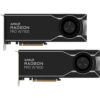
AMD’s Radeon PRO series of workstation GPUs has just been augmented with the first models infused with the company’s RDNA3 architecture. We’re taking a look at the high-end 32GB Radeon PRO W7800, as well as the even higher-end 48GB Radeon PRO W7900, across a wide-range of production workloads.
Page 4 – Blender, LuxCoreRender Performance & Final Thoughts
Where render engines are concerned, the timing of this Radeon PRO launch is a little awkward. We’re on the cusp of the release of two solutions that will take better advantage of AMD’s hardware – or hardware at all. As mentioned earlier, the first public beta of Maxon’s Redshift to support Radeon has just been released, and we expect to dig into it in the weeks ahead.
The second major shift will be hitting the next version of Blender, 3.6, with AMD’s HIP to undergo surgery to improve rendering performance with the help of accelerated ray tracing (in a similar vein as NVIDIA’s OptiX). We’re eager to test both, and will do so soon.
Blender
Anyone who’s checked out one of our recent Blender performance deep-dives pretty much knows the skinny on the current state of the vendors. With Cycles, NVIDIA generally dominates, as its architecture and OptiX prove mighty potent. The AMD vs. NVIDIA battle is much tighter with Eevee rendering, but NVIDIA still edges ahead overall.
To say we’re eager to fully test Blender’s HIP-RT is an understatement. The final version of Blender 3.6 isn’t due for another month, so we’ll give the beta branch a test soon.
LuxMark
LuxMark can’t take advantage of RT accelerators, but even still, NVIDIA’s rendering prowess is hard to battle against. AMD’s new Radeon PROs do well overall, however.
Final Thoughts
Wrapping-up a workstation GPU review can feel either complex or straight-forward depending on the angle. Because of the sheer number of variables in workloads, it’s impossible to draw up a definitive conclusion. What matters is how well a GPU performs for you in your most important workloads.
As we saw multiple times throughout our results, especially the viewport subtest results, how GPUs and each vendor scales with each other isn’t always predictable. Often, it’s outright unpredictable. So, the right GPU for you is the one that gets your most important work done quickest.
Where viewport performance is concerned, AMD’s new Radeon PROs had particular competitive strengths in CATIA, Creo, Siemens NX, and even Medical. The subtest results highlighted that it’s not often possible to conclude one vendor as the definitive winner, because while one might perform better in one viewport mode, it might not in another. You’d want to find the card that offers the best overall performance across them all.
AMD has offered fast video encoders for a while, but across Premiere Pro and HandBrake, the new Radeon PROs delivers the goods. RDNA3 has distinct strengths in AVC and HEVC transcode, and also handled our 8K ProRes transcode better than the rest. We hate to not have had AV1 benchmarks this time around, but it’s on the agenda to tackle soon.
Across all workloads, the new Radeon PROs performed as well as we’d expect top-end options to perform. Its biggest hang-up is with rendering performance, where NVIDIA dominates more often than not. As mentioned earlier, Maxon Redshift has just gained Radeon support (in beta form), and Blender 3.6 is going to enable ray tracing acceleration in Cycles. Even still, it’s clear that NVIDIA’s Ada architecture is hard to beat at rendering.
With Radeon PRO, and workstation GPUs in general, a big part of the benefit of owning one is receiving advanced customer service support, drivers that offer optimizations and certifications for the software you’re likely using, and in the case of the higher-end parts, there’s ECC to take advantage of (should you want it).
Of course, the absolutely monstrous framebuffers are another thing that set these Radeon PROs apart. If your workloads require lots of memory, then having a large framebuffer that won’t limit you isn’t just important, but critical. To get the same memory on NVIDIA is much more expensive, a point AMD has emphasized for this launch. When looking at either SRP or real-world pricing, that is in fact true. It always comes back to the same question, though: “Which GPU is fastest for my most important workloads?” Luckily for AMD, its latest Radeon PROs dominate a lot of them.
Support our efforts! With ad revenue at an all-time low for written websites, we're relying more than ever on reader support to help us continue putting so much effort into this type of content. You can support us by becoming a Patron, or by using our Amazon shopping affiliate links listed through our articles. Thanks for your support!




